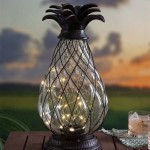Can You Keep Palm Plants Outdoor?
Palm trees are known for their tropical beauty, adding a touch of the exotic to landscapes worldwide. However, the question of whether a specific palm species can thrive outdoors depends on a few crucial factors, primarily the climate and the palm's specific cold hardiness. While many palm species are synonymous with warm climates, certain varieties have adapted to cooler temperatures and can tolerate frost or even sub-freezing temperatures.
This article explores the key factors influencing outdoor palm cultivation, dissecting the complexities of palm hardiness and providing practical advice on selecting the right species for your region.
Understanding Palm Hardiness
Palm hardiness refers to a palm's ability to withstand cold temperatures. It's measured using the USDA Plant Hardiness Zones, a system that divides the United States into zones based on average minimum winter temperatures. Each zone encompasses a 10-degree Fahrenheit range, with Zone 1 being the coldest and Zone 13 the warmest.
The hardiness of palms can vary drastically, with some species thriving in tropical climates, while others can withstand mild frosts or even sub-freezing temperatures for short periods. For example, the hardy Windmill Palm (Trachycarpus fortunei) is known for its resilience in cold temperatures, tolerating Zone 6 conditions. Conversely, the Queen Palm (Syagrus romanzoffiana) is susceptible to frost damage and requires a warm, frost-free environment, typically found in Zones 9-11.
Factors Affecting Outdoor Palm Survival
Beyond the fundamental hardiness zone, several factors influence the survival of palms outdoors. These include:
- Microclimate: The microclimate of your location can vary significantly from the overall USDA zone. Factors like elevation, proximity to water, and wind exposure can influence the local temperature. For instance, a palm planted near a south-facing wall might enjoy warmer temperatures than one exposed to harsh winds.
- Soil Drainage: Palm trees prefer well-draining soil that prevents waterlogging. Excessive moisture can lead to root rot, particularly during colder months when the soil is less active. Proper drainage is essential for protecting the plant's root system.
- Winter Protection: While some palms are cold-hardy, even hardier varieties can benefit from winter protection in harsh climates. Mulching around the base of the palm can help insulate the root system and shield it from freezing temperatures. Additionally, wrapping the trunk with burlap or other protective materials can minimize frost damage to the delicate fronds.
Choosing the Right Palm for Your Location
Selecting the appropriate palm species for your area is crucial for its long-term survival and thriving. To ensure success, consider the following steps:
- Determine your USDA Hardiness Zone: Find out your USDA Hardiness Zone using online resources or consulting with a local nursery. This will provide you with a baseline understanding of the average winter temperatures in your area.
- Research Palm Hardiness: Research the cold hardiness of various palm species. Pay attention to the specific hardiness zone range of each palm and select those that align with your local climate.
- Consult with Local Experts: Seek advice from local nurseries or horticultural experts familiar with the specific climate and conditions in your region. They can provide valuable insights on which palms are likely to thrive in your area.
By considering these factors and carefully selecting the right palm variety for your location, you can enjoy the beauty and tropical elegance of these remarkable plants in your outdoor space for years to come.
How To Care For Palm Trees Plantingtree
How To Care For Palm Trees Plantingtree
How To Care For Palm Trees Plantingtree
:strip_icc()/101025074-e5a5260b2747413fb82a22193119b78b.jpg?strip=all)
How To Plant And Grow A Palm Tree
Palms Hardy Rhs Gardening

How To Plant Grow Palm Trees Miraclegro

Palm Tree Landscaping Ideas Indoor And Outdoor Paradise Jay Scotts Collection

Areca Palm Growing And Caring For Palms Bbc Gardeners World

How To Grow And Care For Your Pygmy Date Palm Lively Root
Keep Palm Carry Fronds Gardening
Related Posts







